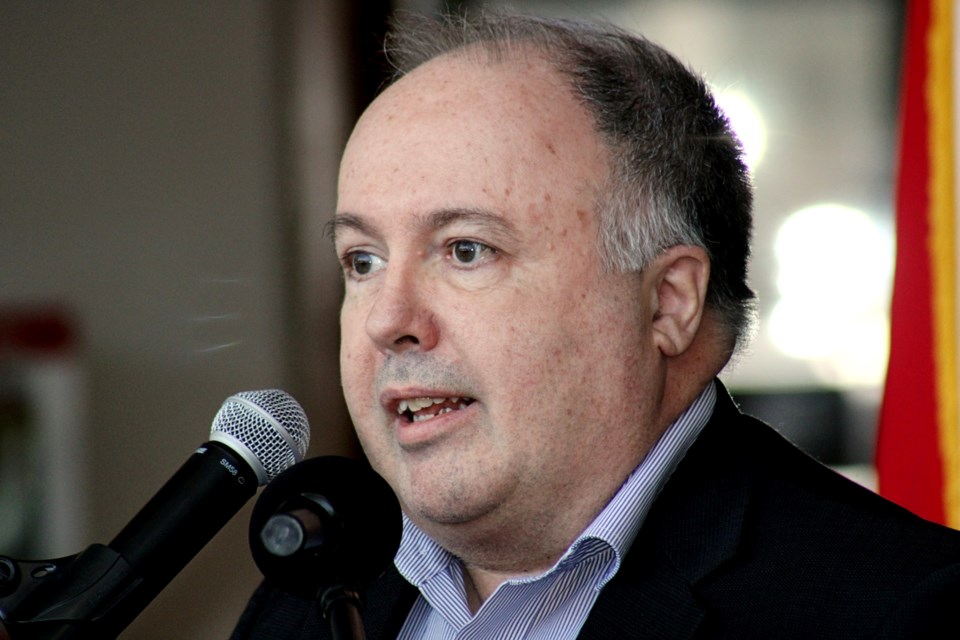The City of Greater Sudbury’s infrastructure gap has already been well-established, but a new report by city CAO Ed Archer adds gravity to the situation.
The city’s underfunding of asset renewal carries a “critical” risk level, according to the report, with “major” consequences.
Intended to support city council’s 2024-25 budget deliberations, Archer’s report highlights what risks exist within municipal operations.
“The corporation cannot completely avoid risk, nor eliminate it,” Archer’s report notes.

“Every activity carries some risk, and municipalities are continuously exposed to a wide spectrum of risks. It is important to understand council’s perspective on the acceptable balance between risk mitigation and timely, low-cost service efforts.
Among the nine municipal risks included in Archer’s report, eight carry “significant” risk and one carries “critical” risk.
The critical risk area with “major” consequences is: “Asset renewal investments may be insufficient to maintain acceptable conditions and service levels.”
“This risk’s likelihood has potential to decrease as efforts continue to consolidate municipal facilities, invest in asset renewal using robust condition assessments and data literacy grows so there is consensus about service expectations,” according to Archer’s report.
“Offsetting these positive developments is the reality that inflation and price increases mean budgets are increasingly insufficient to sustain known renewal/replacement investments. Consequences may have increased as aging infrastructure requires more maintenance and renewal.”
Earlier this month, Archer told Sudbury.com the city’s annual infrastructure gap is approximately $130 million, which is the amount required to maintain its current assets.
To fill this annual funding gap in a single year, the city would need to increase the tax levy by approximately 39 per cent, which city staff are not advocating for. They are, however, recommending a 1.5-per-cent tax levy increase on top of whatever else is approved during 2024-25 budget deliberations, to address infrastructure needs.
Enterprise risk area No. 1 in Archer’s report also relates to the city’s infrastructure gap, and reads: “Misalignment may exist between financial resource allocations and council’s priorities,” which is of “significant” risk level, “almost certain” likelihood and have “moderate” consequences.
“This risk's likelihood has increased since 2021, resulting from changes in provincial policy and continued constraints on municipalities that sustain a high reliance on property tax revenue to support programs and services,” according to the report. “Consequences remain high, as misalignment can lead to inefficiencies and decreased service quality.”
In the city’s proposed 2024-25 budget document, it’s noted the city has seen a reduction of Ontario Municipal Partnership Fund annual funding of $9.8 million during the past 10 years, from $31.4 million to $21.6 million.
Other risk areas classified as “significant” include:
- The corporation, or the city as a whole, is insufficiently resilient to respond to environmental or economic shocks.
- Global connections and business attraction/development efforts may be insufficient for ensuring Greater Sudbury’s economic competitiveness.
- Communications and engagement efforts may be insufficient for building resident trust and confidence.
- Existing human capital management policies and practices may be insufficient for attracting, managing, developing and retaining top talent to support existing and future operations.
- The corporation may be unprepared for the effects of climate change.
- Corporate service delivery may be insufficiently supported by appropriate technology, datasets, training or equipment.
- Information entrusted to the corporation may be inadequately protected from unauthorized access.
Although several steps have been taken to address these challenges, the likelihood of them happening still ranges from “possible” to “likely.”
The report defines “likely” as having a 70- to 95-per-cent likelihood of happening, and “possible” as carrying a 30-per-cent and 70-per-cent likelihood of occurrence.
Archer’s report will be presented to city council during their Nov. 28 meeting, whose open session begins at 6 p.m. The meeting can be attended in-person at Tom Davies Square or livestreamed by clicking here.
Tyler Clarke covers city hall and political affairs for Sudbury.com.